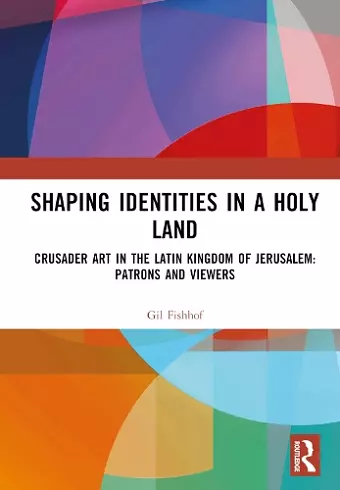Shaping Identities in a Holy Land
Crusader Art in the Latin Kingdom of Jerusalem: Patrons and Viewers
Format:Hardback
Publisher:Taylor & Francis Ltd
Published:21st Dec '23
Currently unavailable, and unfortunately no date known when it will be back

In the 88 years between its establishment by the victorious armies of the First Crusade and its collapse following the disastrous defeat at Hattin, the Latin Kingdom of Jerusalem was the site of vibrant artistic and architectural activity. As the crusaders rebuilt some of Christendom's most sacred churches, or embellished others with murals and mosaics, a unique and highly original art was created. Focusing on the sculptural, mosaic, and mural cycles adorning some of the most important shrines in the Kingdom (such as the Church of the Holy Sepulchre, The Basilica of the Annunciation, and the Church of the Nativity), this book offers a broad perspective of Crusader art and architecture.
Among the many aspects discussed are competition among pilgrimage sites, crusader manipulation of biblical models, the image of the Muslim, and others. Building on recent developments in the fields of patronage studies and reception theory, the book offers a study of the complex ways in which Crusader art addressed its diverse audiences (Franks, indigenous eastern Christians, pilgrims) while serving the intentions of its patrons.
Of particular interest to scholars and students of the Crusades and of Crusader art, as well as scholars and students of medieval art in general, this book will appeal to all those engaging with intercultural encounters, acculturation, Christian-Muslim relations, pilgrimage, the Holy Land, medieval devotion and theology, Byzantine art, reception theory and medieval patronage.
‘Part synthesis, part original thesis, teeming with new ideas, and reconsidering old orthodoxies, Shaping Identities in a Holy Land is an inspirational piece of work demonstrating a great deal of reflection and research. Fishhof is especially strong when placing specific pieces of artwork or architectural features in their contemporary context, identifying the moulding influence of contemporary concerns and ambitions. His thesis that a culture of “flexibility” represents the Frankish artistic project is likewise highly illuminating. Historians have traditionally defined Eastern Frankish culture as driven by dogmatic inflexibility and a brutal indifference or hostility towards other cultures; this stands starkly in contradistinction to the far more flexible and negotiated model offered by Fishhof’ - Al-Masāq, 36:2.
‘This researcher, in his exceptional way, examines in his new book the existing studies in the field of Crusader art. Fishhof 's book offers a new and original interpretation of those medieval sites where Crusader elements appear in the cities of Jerusalem, Bethlehem and Nazareth, in impressive Crusader churches, and remaining as prominent sites of that period, such as the Church of the Holy Sepulchre and the Church of Emmaus in Abu-Ghosh’ - Ordines Militares, XXIX 2024.
‘… an important, interesting, and thoroughly engaging work’ – Crusades, 23:2.
ISBN: 9781032271712
Dimensions: unknown
Weight: 860g
362 pages